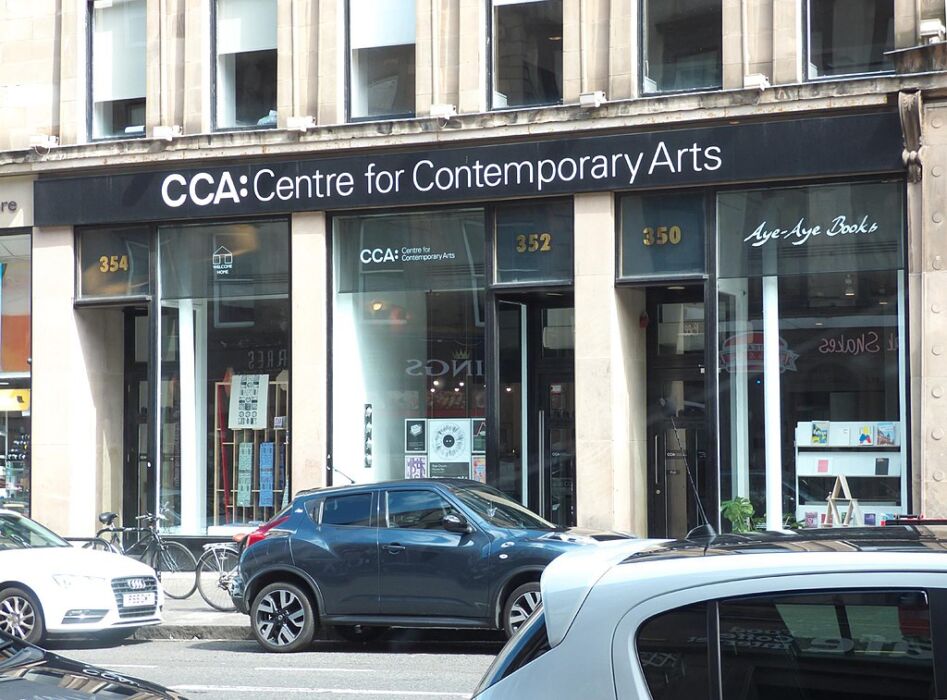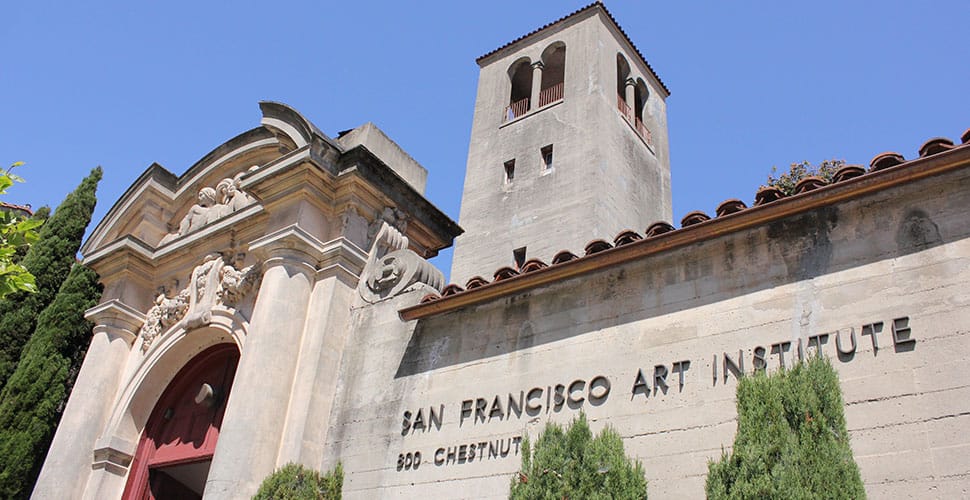I'm at a café. At the next table, two young women and one guy, all secular, are chatting about visiting Gaza.
“There are areas you can already enter,” he says.
“I’ll give birth to my baby there,” one woman says.
“In Gaza??”
“Yeah. By then, it’ll be like Vegas. He’ll get an American passport.”
They nod, pleased, humming to the song playing.
On 25 February 2025, US President Donald Trump shared an AI-generated thirty-three-second video on Truth Social. The video, depicting his vision of a post-war Trump Gaza, presents a transformed Gaza with golden Trump statues, a rebuilt 'Riviera,' Trump and Netanyahu lounging at the hotel pool, and Elon Musk enjoying hummus before dancing amid showers of cash. Accompanying this visual spectacle is an AI-generated song proclaiming: 'Donald is coming to set you free, bringing the light for all to see. No more tunnels, no more fear, Trump Gaza is finally here.'1
Upon viewing the video, a straightforward reading reveals a brutal colonialism advanced by a narcissistic, megalomaniacal president – an alarming and dangerous vision. It's a vision that shocks and appalls, particularly when shared by the president of the United States, seemingly promoting an ethnically cleansed future Gaza boasting luxury skyscrapers, beach parties, and golden statues of himself – a textbook settler colonial fantasy. It's a horrifying celebration of what should be viewed as an atrocity. Trump posted the video on Truth Social without context or source, effectively presenting it as a potential policy blueprint.2
The video quickly caught media attention across the political spectrum worldwide. The Palestinian Authority (West Bank-based) called the proposal a "serious violation of international law," while Gaza's Hamas-run Government Media Office denounced the video as "disgraceful."3 Trump's Christian supporters seemed particularly unsettled, with numerous comments highlighting the golden statue's idolatrous nature and criticizing a scene depicting bearded belly dancers. When questioned about the video and the president's messaging about Gaza, the White House reinforced previous statements. "As President Trump has said, Gaza in its current state is [uninhabitable] for any human being."4 The Israeli government did not issue a direct response to the video itself. However, Prime Minister Benjamin Netanyahu described Trump's proposal — in which the United States would take control of Gaza and remove its 1.8 million residents — as an “original idea” that could “change history.”5
Despite the widespread media coverage, ranging from outrage to amusement, almost no one looked into the video's origins or the motivations behind its creation. After a couple of days of media frenzy, in what might be the perfect embodiment of our post-ironic age, it was discovered that this AI-generated fantasy video of Trump's vision for Gaza was created by Solo Avital and Ariel Vromen, Israeli artists living in Los Angeles with no connection to the Trump campaign.
After Trump posted the video, Avital briefly clarified on Facebook: “Not commissioned, not endorsed – just S A T I R E.” The post disappeared the next day. When the creators later spoke to NBC News, they claimed they had no idea how the video reached the president. It began, they explained, as a kind of pilot – an internal joke while experimenting with an AI tool called Arcana.6 “The idea was like, how Trump wants to turn Gaza into Vegas,' Vromen said. 'We wanted to have an internal laugh about it. It was a joke.” But then their tone shifted. Vromen suggested that Trump’s proposal was one of the few “forward-thinking” approaches to the region’s deadlock.
“You look at Trump Gaza, and you are like, 'Hey, gazillion times better than what it is right now, whether it’s good or bad,'” he said. “With humor, there is truth, you know, but it was not our intention to be a propaganda machine."7
The Trump Gaza video is not an isolated incident but part of a pattern of the current American president using AI-generated imagery as political trolling. Later, in May 2025, shortly after Pope Francis' death, Trump posted on X (previously Twitter) an AI-generated image of himself dressed as the future pope.8 This post followed Trump's joking remark about wanting to be Pope, which sparked similar polarized reactions. While some were outraged – "This is disrespectful to the church and God himself… he's literally the antichrist."; "disgusting and entirely offensive" and criticized Trump for mocking the Catholic Church during a period of mourning for Pope Francis. Historian Ruth Ben-Ghiat even described it as an "authoritarian leader cult alert."9 Trump supporters and some social media users found the image humorous or praised it as bold trolling. Some even took the idea seriously, Republican Senator Lindsey Graham playfully supported the idea, posting on X, "I was excited to hear that President Trump is open to the idea of being the next Pope. This would truly be a dark horse candidate, but I would ask the papal conclave and Catholic faithful to keep an open mind about this possibility!" He further quipped about a "Pope–US President combination" and watching for "white smoke… Trump MMXXVIII!".10
— The White House (@WhiteHouse) May 3, 2025
The Pope image and the Gaza video are linked through their shared strategy: both use AI to troll sacred and sensitive issues while projecting Trump as a messianic, defiant figure. They create an image for exaggerated, unthinkable, outrageous ideas and bring them into being as part of the discourse. Both generated predictable outrage while delighting supporters who view such provocations as masterful trolling of establishment sensibilities. Where the Pope's image plays with religious authority and institutional power, the Gaza video extends this approach to geopolitical reconstruction and colonial fantasy. Together, they demonstrate how AI-generated imagery has become central to Trump's propaganda strategy — a strategy that deliberately collapses distinctions between satire and sincerity, strategic proposals and provocation.
Let us look deeply into Trump's Gaza. A remarkable circulation – from satirical creation to presidential endorsement to media controversy and back to acknowledged satire with some concurrence – offers a unique lens through which to examine contemporary relationships between Art, politics, and digital media. These almost accidental cultural artifacts raise profound questions about contemporary art's critical function. While calling Avital's and Vromen’s video "art" might attribute undue legitimacy to what began as political satire – or even an inside joke – analyzing it through artistic theories and tactical media practices can reveal new (and much needed) spaces for intersections of politics, media and aesthetics, while also highlighting the ways activist artistic strategies are becoming increasingly ineffective against contemporary propaganda.11
The video evokes a comparison to Tamir Zadok's work depicting the fictional construction of a canal separating the Gaza Strip from Israel.12 Elad Yaron (2025), comparing these works, notes that Zadok's piece functions as both a utopian dream and an acknowledgment of dystopian reality.13 Zadok's The Gaza Canal (2010) provokes thoughts about image versus reality while reflecting on collective consciousness and unconscious desires. His work is transparently fictional and cynical, clearly designed to engage with Gaza's complex realities in a sophisticated manner. Yet, spectators' perceptions shifted based on their understanding of what they saw and their standpoints. Referring to “Gaza Canal”, Keren Goldberg (2023) discusses how, following Gilles Deleuze, the meaning of a work is not fixed but is shaped by the viewer's interpretation, whether they see it as reality or recognize it as Art.14 Initially, many saw the Gaza Canal as a genuine political proposal, but once they realized it was an artwork, their understanding of its political significance changed. This concept is also relevant to the Trump Gaza video, where the boundary between satire and propaganda is blurred, leading to different interpretations depending on the viewer's perspective.
Perhaps the most compelling aspect of Trump Gaza is that Avital and Vromen created a piece of satire that was then embraced – unironically – by its target. It should read as a parody. And yet, when we consider that Trump posts it on a platform called Truth, the distinction collapses. This isn’t satire failing; it’s satire working too well. The fiction blends so seamlessly into the real that the object is mistaken for affirmation. Meaning here doesn’t live with the artist – it shifts to those with platforms and power. And while Avital and Vromen insist their intent was satirical, the work’s visual language holds enough ambiguity to allow for multiple readings. The hyperbolic golden Trump statues may read as a critique to some viewers, but to a figure who has literally gilded his residences, such imagery might appear aspirational rather than mocking.
This phenomenon exemplifies what Art theorists call "parafiction" (Lambert-Beatty, 2009) – fiction experienced as fact – which has gained significant traction in contemporary Art alongside the rise of digital technology.15 Parafiction operates in a liminal space where fabricated narratives are temporarily accepted as truth, creating productive confusion that challenges established power structures. In the case of Trump Gaza, the work functions as parafiction not because viewers believed the depicted events were real but because its satirical intent was absorbed and repurposed as genuine political messaging and agenda. This transformation highlights how parafictional Art can transcend its creators' intentions, and raises acute questions about effective satire in an age where reality has outpaced parody and digital circulation rapidly recontextualizes artistic meaning.
Even if the ambitions of Trump Gaza were oppositional (which remains unclear), to many viewers the work represents a prophecy rather than a critique – a capitalist utopia that buries (pun intended) rather than addressing fundamental problems. However, treating Trump Gaza and "Trump as the Pope" as artwork can paradoxically achieve the opposite of its apparent intent when Trump shared it, transforming propaganda into critique through its very acceptance as artwork. Artwork that occupies an ambiguous position where its meaning shifts depending on the platform it is shown on, and the audience who receives it. As art, it has the power to operate simultaneously as multiple, even contradictory, forms of discourse within our contemporary media and cultural ecosystem.
We must reconsider how artistic critique can adapt when satire becomes so layered and saturated with cultural signifiers that its very target misinterprets it. Examining the video through an aesthetic lens reveals that its critical potential lies in the gap between its creators (whose satirical intent is now declared) and its reception, first by Trump and then by his audience. Rather than concluding that art has lost its relevance in an AI-saturated and post-truth media landscape, we can explore new pathways for artistic practices to confront, challenge, and even undermine this type of political imagery.
The Double Function of Trump Gaza
Trump's shared AI imagery can be viewed as unintentional artwork that employs the strategy of "over-identification." This concept emerged from Slavoj Žižek's (1993)16 analysis of the Slovenian Art collective Neue Slowenische Kunst (NSK) and the industrial band Laibach, which deliberately adopted totalitarian aesthetics. They performed fascist and communist symbols with such excessive enthusiasm that they revealed the underlying absurdities of these ideologies.
Žižek explains artworks that exaggerate ideological power structures and aesthetics as an artistic tactic; he calls this over-identification with the hidden reverse of ideology, a strategy where one takes an ideology more seriously than its adherents do, embracing its hidden premises and unspoken implications to the extreme. Rather than maintaining ironic distance or offering direct critique, he suggests that "over-identification" exposes ideology's contradictions by enthusiastically performing its unstated logic and repressed content (its "hidden reverse"), pushing it to uncomfortable conclusions that reveal what the system must disavow to maintain its legitimacy.
This approach evolved through artists like Santiago Sierra and groups like Public Movement and The Yes Men, who impersonated corporate representatives and announced exaggerated but logically consistent corporate policies, exemplified by their landmark 2004 BBC appearance as Dow Chemical representatives pledging full compensation to Bhopal disaster victims. Similar methodologies emerge in Christoph Schlingensief's controversial "Ausländer Raus!" (2000) installation, where he housed asylum seekers in Big Brother-style containers for public "deportation voting" by Austrian citizens.17 This tactical tradition extends through numerous artist-activist collectives such as Ubermorgen,18 If our tactics can be appropriated by political power, then we must either use them differently or in a way that shows people how these tactics are being abused.” (translation by claude from German) https://www.faz.net/aktuell/feuilleton/kunst-und-architektur/die-netzkuenstler-ubermorgen-und-gretchen-andrew-110437438.html] Yomango, and RTMark, each deploying institutional mimicry to expose underlying political and economic contradictions and absurdities.
The Trump Gaza’s imagery is so excessive and outlandish that it initially reads as a tactical media project. Avital and Vromen, whether deliberately or inadvertently, appear to over-identify and expose contradictions and the horrific absurdity of Trump's vision for the Middle East. Their approach demonstrates how embracing an ideology's logic more enthusiastically than its own proponents can reveal what typically remains unspoken for the system to function, effectively short-circuiting the normal operation of ideology by eliminating the cynical distance, as Žižek (1992) theorized.19
However, in today's reality, where those in power scarcely attempt to disguise their intentions with ideological moral pretense, when a senator can publicly support the idea of President Trump being the next Pope, there is no cynical distance to remove, and these artistic strategies become futile if not Grotesque. When trolling allows participation in the system while not even pretending to endorse its contradictory and/or problematic aspects, exposing hypocrisy has no relevance. Žižek formulated the concept of "over-identification" in the 1990s when neoliberal regimes hid behind more lukewarm versions of themselves (Žižek, 1992). The context has fundamentally changed since then. In the world of Trump, Putin, Musk, and Netanyahu, we must question whether it remains not only possible, but relevant to unmask ideological symbols through irony, parody, satire, or exaggeration. As Ofri Ilany (2024)20 argues, attempting cultural disruption is pointless in our already disrupted era, where the populist right eagerly embraces the roles of both clown and rebel. Similarly, artistic strategies that try to reconstruct and then deconstruct ideology are obsolete when the "hidden reverse ideology" is neither hidden nor intact. These approaches have become irrelevant and ineffective, both as art and as political action.
When over-identification becomes indistinguishable from sincere endorsement – when Trump himself shares what was potentially created as satire – we witness both the power and limitations of artistic strategies. They reveal how traditional forms of critique, through exaggeration, struggle in an era where reality routinely outpaces parody. Nevertheless, paradoxically, by being embraced by its supposed target, Trump Gaza achieves a kind of double function: it simultaneously serves as propaganda for Trump supporters (and supporters of the destruction of Gaza) while exposing the raw, unfiltered vision of a totalitarian hyper-capitalist approach to conflict zones for the critical public. In elevating Trump Gaza to "the most amazing artwork" (okay, I will use a little exaggeration here myself), I do not suggest that one can overcome Trump's media trolling; instead, I demonstrate how attention to its mechanisms can partly deprive it of its power.
In early 2025, a diplomatic gesture between Netanyahu and Trump took the form of a gold-plated pager commemorating the controversial 2024 Mossad operation “Operation Grim Beeper” against Hezbollah. Dani Ploeger (2025) described it as prank politics.21 The gold pager, which could be seen as a brilliant artwork if created by an artist, transforms a violent military operation, whether justified or not, into a symbolic gift. It highlights how commemorative culture can be used to legitimize and aestheticize state violence. Before such gestures became owned by those in power, critical artists used the aestheticization of violence and symbolic state artifacts to provoke ethical reflection. But now that political leaders openly celebrate such actions through darkly ironic diplomatic keepsakes, we are left to consider what artistic strategies still carry critical force. How can artists respond when the aestheticization of state violence becomes embedded in the rituals of official diplomacy?

Israel Government Press Office
This collapse of the distinction between critique and endorsement points to a broader phenomenon in our media ecosystem, where meaning is increasingly determined not only by the creators’ intent but by circulation context and audience reception. Perhaps the ultimate lesson of Trump Gaza is not that over-identification has failed as a strategy but that it has succeeded too well, revealing a political reality where the absurd is normalized and where power no longer needs to mask its intentions behind ideological pretense. In such a world, new forms of artistic and political intervention must move beyond ironic distance to engage directly with the unadorned realities of contemporary power structures. What matters now is not merely the content of political discourses but the specific contexts in which power is exercised – the institutional settings, digital platforms, and social environments that shape how authority manifests and how resistance might effectively respond to these evolving control dynamics.
The Art of Political Imagination in a Post-Truth Era
As Guy Debord noted in 1967, despite never having heard of AI-generated art, ״Individual reality is allowed to appear only if it is not actually real."22 The image, representation, fiction, and carefully crafted fake often have more power, visibility, and social acceptance than the real thing, which is not usually pleasant. This more than half-century-old observation, where life becomes a kind of performance where image matters more than reality, illuminates that Trumpism is nothing new — just a much more extreme version of the society of the spectacle.
Within that spectacle, it is not only populist rhetoric but also artistic strategies like over-identification and subversive affirmation that blur the boundary between art and life. They do not operate merely as “social” or “political” art, but as fundamental challenges to our understanding of what art is, what representation means, what is real or fictional, what we are resisting, and the limits of political imagination. In a moment when silence risks complicity, artistic response becomes not only meaningful but urgent. Can this "artwork" (as I have called it) fulfill these functions as well? With its inherent contradictions, can the video and its circulation reflect today’s absurd political theater while also inspiring action, resistance, or—dare we hope—change? Can it help viewers feel the effects of techno-authoritarian capitalism on their own lives, while also recognizing the violence inflicted on millions in Gaza? And can it critique the visions of Trump and Musk without ignoring their structural roles in the crisis itself?
If not, what works of art today can claim power over the theatrical space between intention and reception – a space that neither power nor its subjects can fully control.
What works of art today claim such power?
Trump's political style is itself a form of trolling, deliberately blurring the lines between truth and spectacle in a way that outmatches any artistic intervention. Where The Yes Men once used satire to highlight systemic corruption, today's far-right figures have embraced that same absurdity, not as a critique, but as a strategy to create chaos that serves them. In a world where the most shocking statements come directly from those in charge, Tactical Media no longer works as a form of resistance. So, maybe the most radical resistance today is just giving space for reality.
And that is truly difficult. I acknowledge how despair has gripped many in Israel, Palestine, Iran, and around the world—it is hard to glimpse any light. In this darkness, for some seeking any hope, Trump’s far-fetched, crazy, and horrific vision for Gaza can perversely offer a form of comfort to those who have given up dreaming of justice for Gazans. A hyper-capitalist colonial megacity seems preferable to the current reality and any other future they can imagine. Who wants to face a reality that offers no hope?
Yet, at the same time Trump shared this video, the documentary No Other Land won an Oscar for Best Documentary. Made by a Palestinian-Israeli collective, the film depicts the destruction of Masafer Yatta in the occupied West Bank by Israeli soldiers and the alliance that forms between Palestinian activist Basel Adra and Israeli journalist Yuval Abraham. The film presents the reality on the ground—without AI or artistic manipulation (of course, all documentaries involve some degree of editorial choice, but this footage is real and the story genuinely journalistic)—offering a stark counterpoint to the fantasy of “Trump’s Gaza.” This documentary, meticulously crafted by Israeli and Palestinian partners standing side-by-side in struggle, insists on envisioning a different future. As Samah Salaime wrote in +972 Magazine: “Whereas sinking into despair offers a kind of mental relief from the burdens of our current reality, aspiring for a peaceful future has become an act of bravery that carries within it a call to action."23
The image of genuine Palestinian-Israeli partnership against occupation and apartheid has become exceedingly rare in our time. Paradoxically, the work that now embodies the most profound political imagination does not present an AI-generated utopia, but instead confronts us with unvarnished reality: brutal to witness, at times devastating, yet fundamentally true. In this truth-telling, we find not escapism or Vegas-inspired fantasies, but the foundation for authentic solidarity and the courage to imagine alternatives to the present order. Perhaps the most radical act of political imagination and artistic creation today is not the construction of fantastical futures, but the unflinching documentation of present realities and the human connections formed in the process—connections that may represent the first threads of a more just future, being woven against all odds.

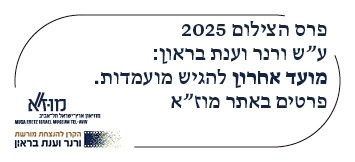

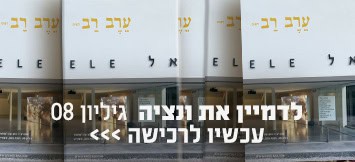

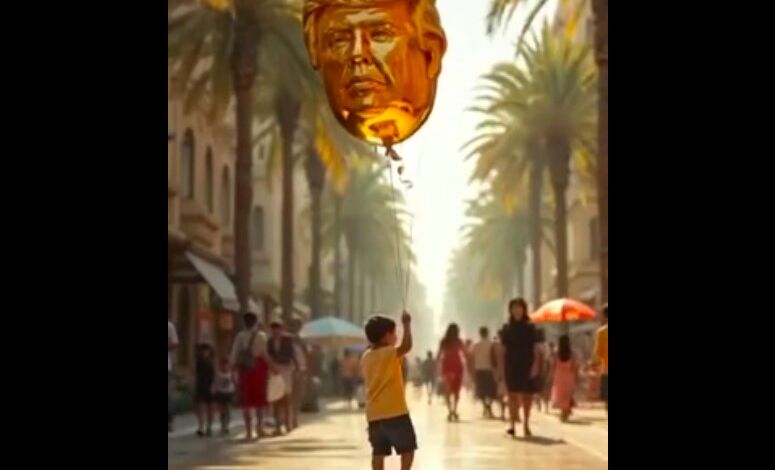
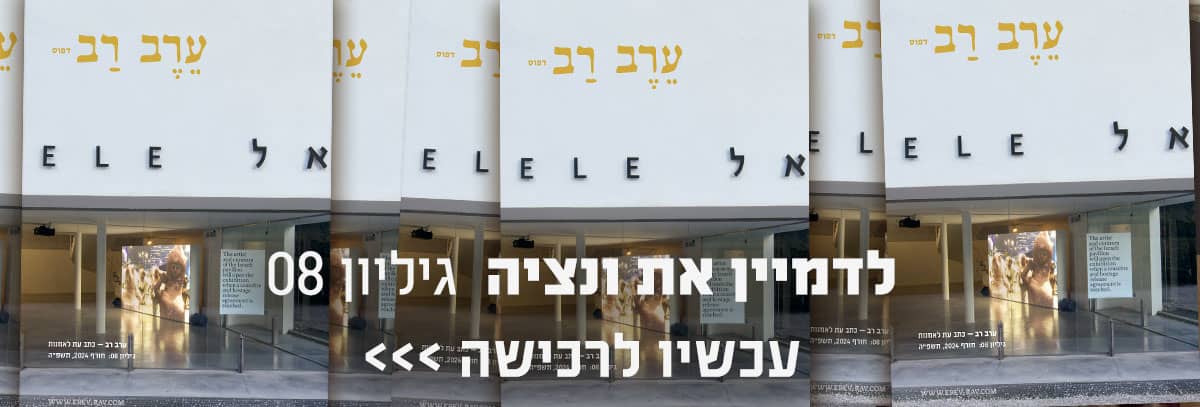
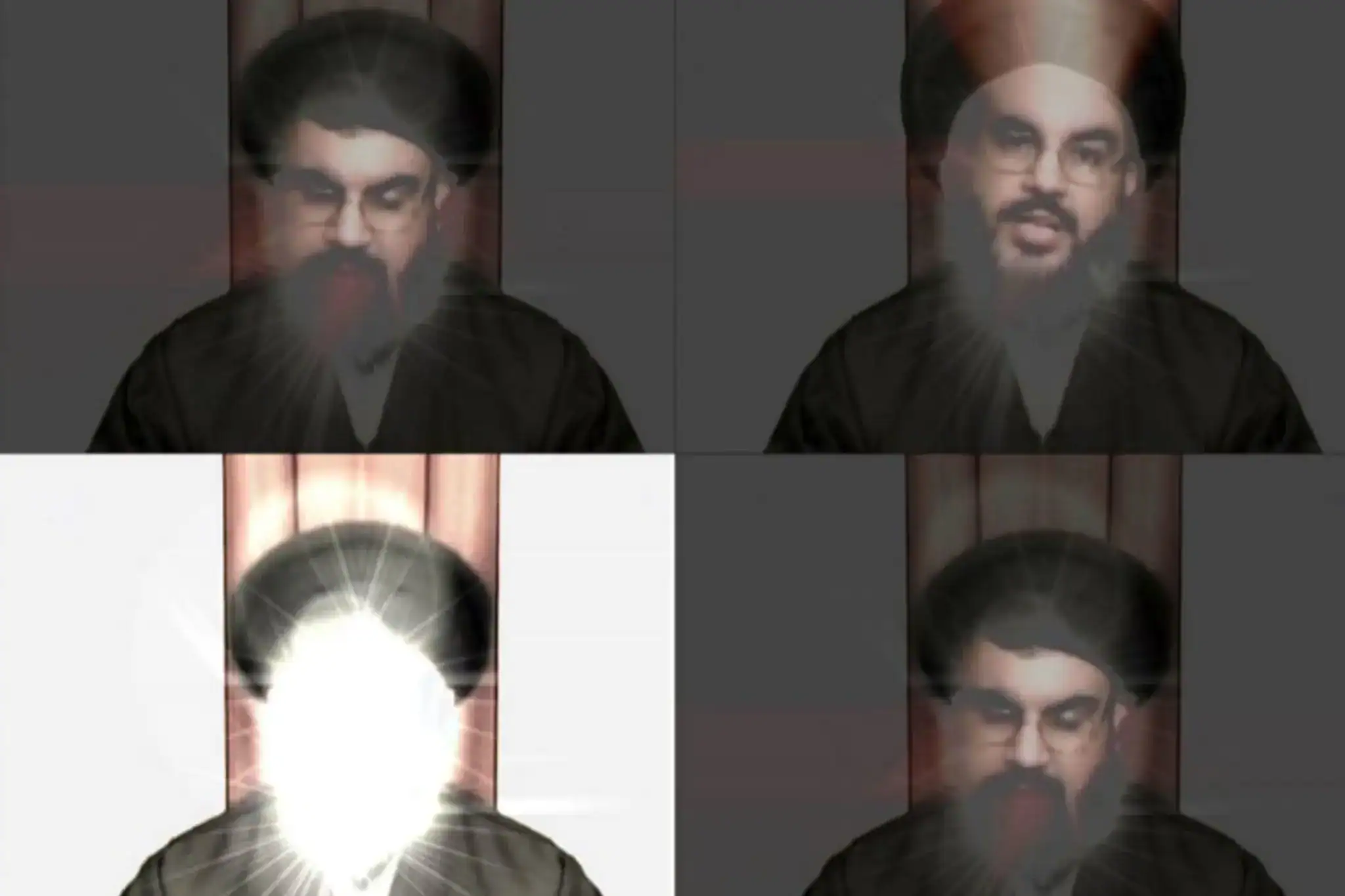 סוכנות קריאטיב אוסטרליה (Creative Australia), הגוף הממשלתי האחראי למימון האמנות במדינה, הודיעה כי האמן חאלד סבסאבי, שגדל בלבנון, והאוצר מייקל דאג’וסטינו ישובו להוביל את הביתן האוסטרלי בביאנלה לאמנות בוונציה בשנת 2026. ההחלטה באה לאחר הדחתם בפברואר בעקבות לחץ פוליטי, בשל עבודות קודמות של סבסאבי שעוררו סערה, בהן סרטון הכולל נאום של מזכ"ל חזבאללה לשעבר, חסן נסראללה. הסרט הוביל להאשמה בסנאט האוסטרלי כי מדובר ב"עידוד לטרור", על רקע מתיחות פוליטית גוברת ואקלים אנטישמי במדינה.
סוכנות קריאטיב אוסטרליה (Creative Australia), הגוף הממשלתי האחראי למימון האמנות במדינה, הודיעה כי האמן חאלד סבסאבי, שגדל בלבנון, והאוצר מייקל דאג’וסטינו ישובו להוביל את הביתן האוסטרלי בביאנלה לאמנות בוונציה בשנת 2026. ההחלטה באה לאחר הדחתם בפברואר בעקבות לחץ פוליטי, בשל עבודות קודמות של סבסאבי שעוררו סערה, בהן סרטון הכולל נאום של מזכ"ל חזבאללה לשעבר, חסן נסראללה. הסרט הוביל להאשמה בסנאט האוסטרלי כי מדובר ב"עידוד לטרור", על רקע מתיחות פוליטית גוברת ואקלים אנטישמי במדינה. 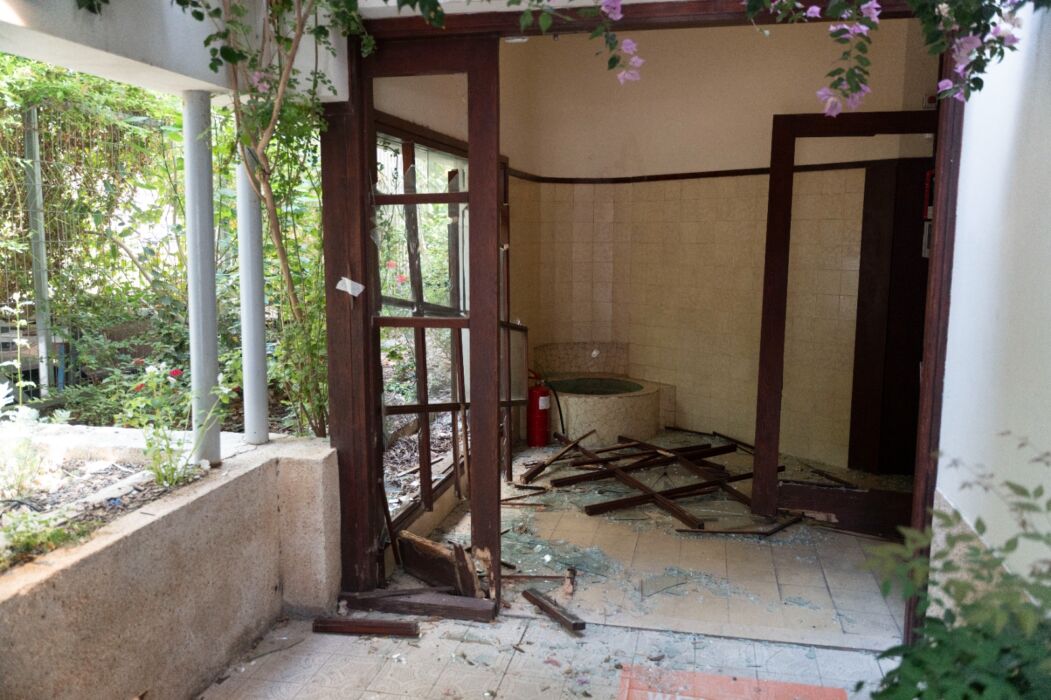 חמישה מבנים היסטוריים לשימור בכיכר ביאליק - מוזיאון העיר, בית ביאליק, בית ליבלינג, פליציה ובית ראובן - נפגעו כתוצאה מהדף פיצוץ הטיל שנפל במרכז תל אביב. הנזקים כוללים דלתות מקוריות שנעקרו, חלונות שנופצו ותריסים שנהרסו. בבית ביאליק נפגעה גם יצירת אמנות מרכזית של חיים ליפשיץ מהעשרים של המאה הקודמת, המתעדת את ביאליק ורבניצקי בעבודתם על ספר האגדה.
חמישה מבנים היסטוריים לשימור בכיכר ביאליק - מוזיאון העיר, בית ביאליק, בית ליבלינג, פליציה ובית ראובן - נפגעו כתוצאה מהדף פיצוץ הטיל שנפל במרכז תל אביב. הנזקים כוללים דלתות מקוריות שנעקרו, חלונות שנופצו ותריסים שנהרסו. בבית ביאליק נפגעה גם יצירת אמנות מרכזית של חיים ליפשיץ מהעשרים של המאה הקודמת, המתעדת את ביאליק ורבניצקי בעבודתם על ספר האגדה. 